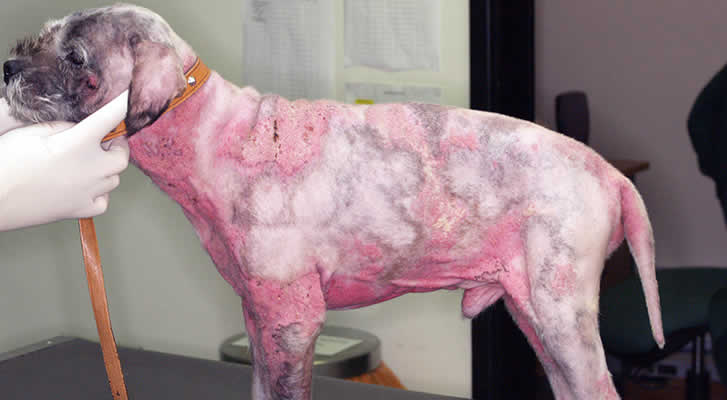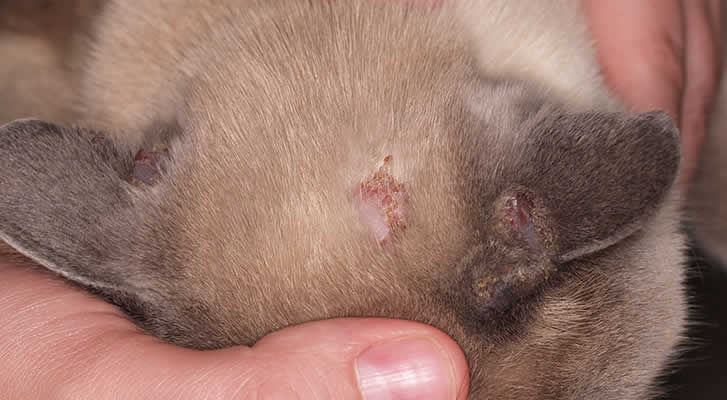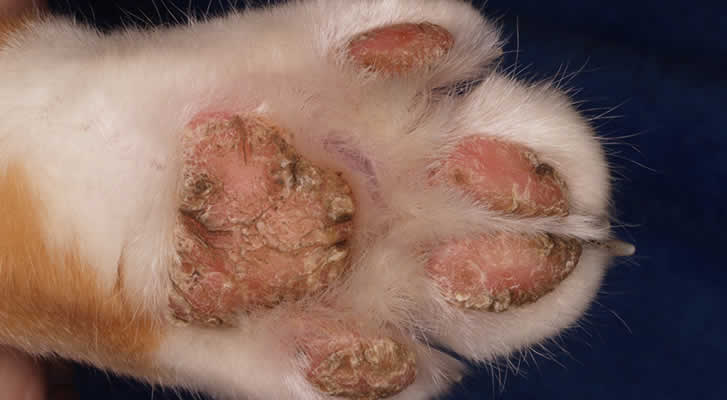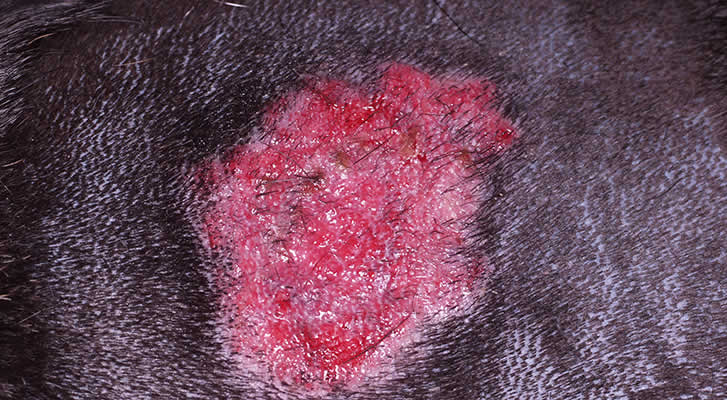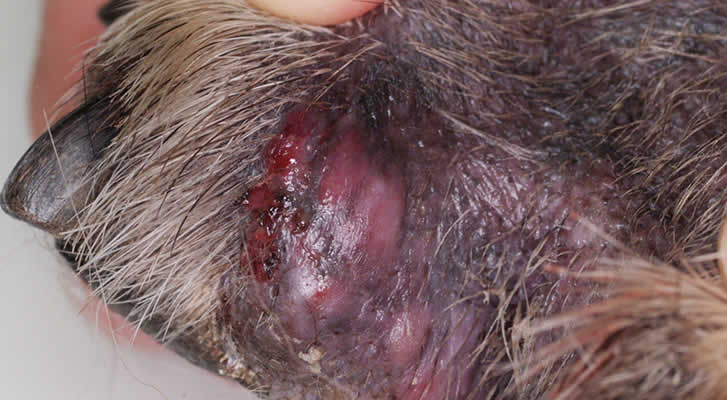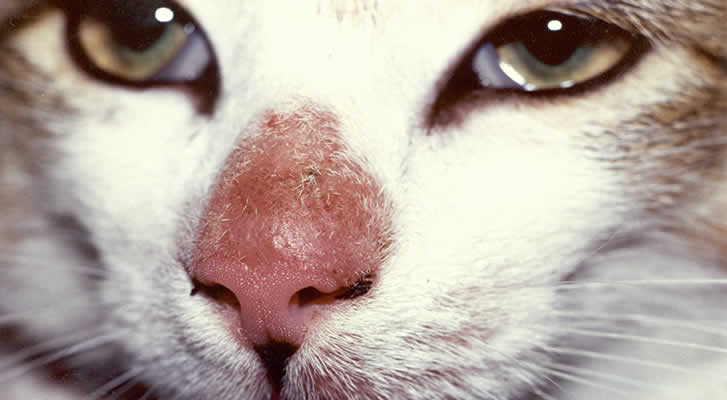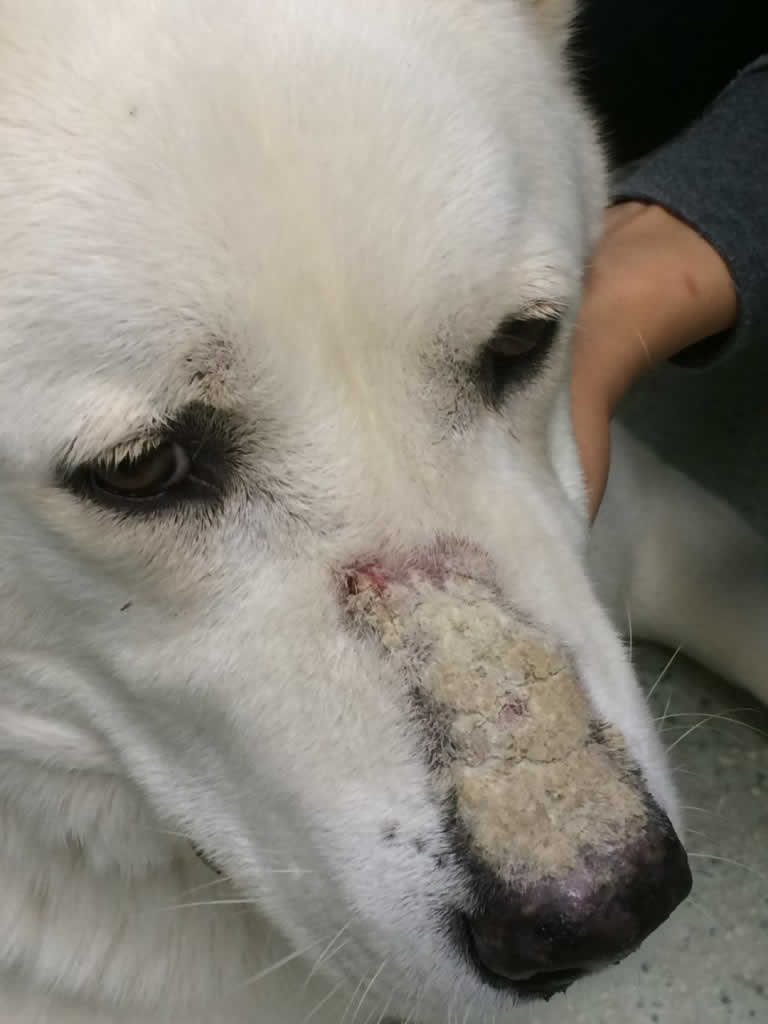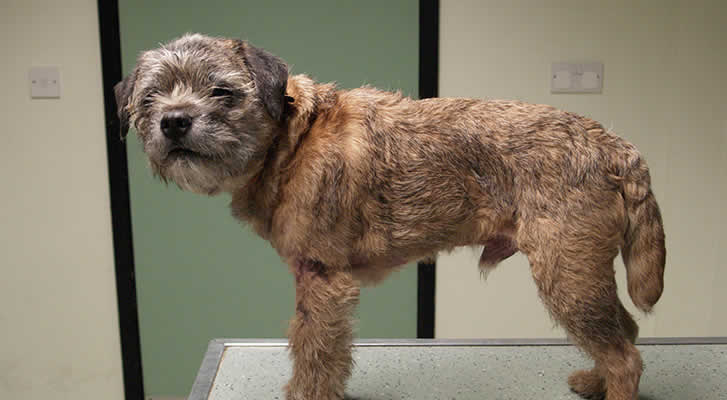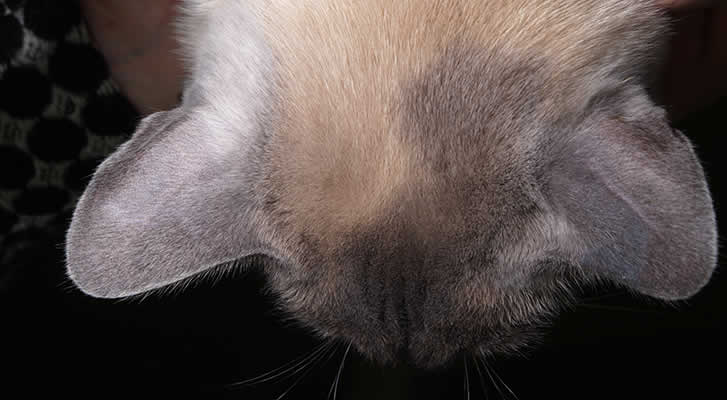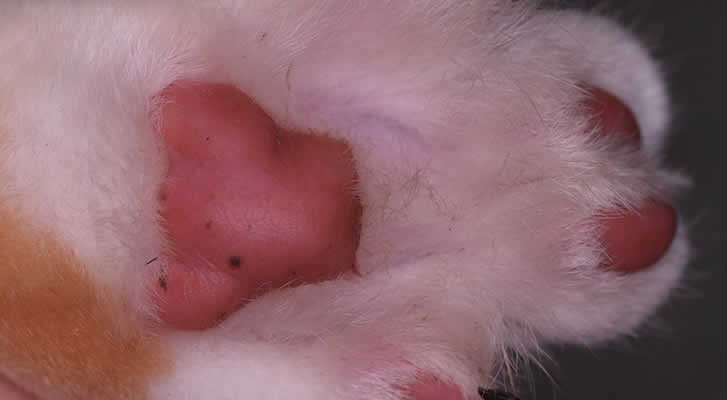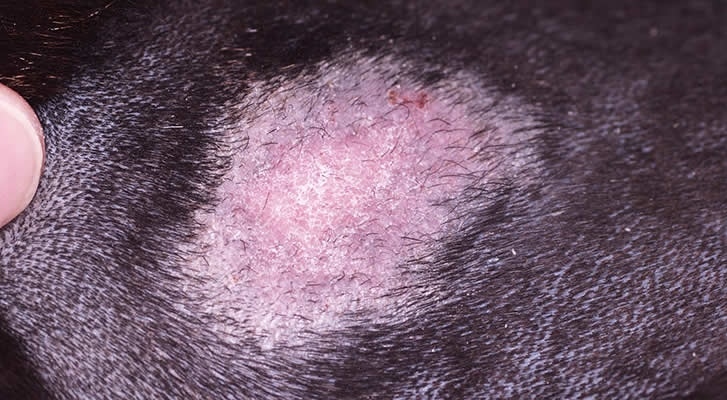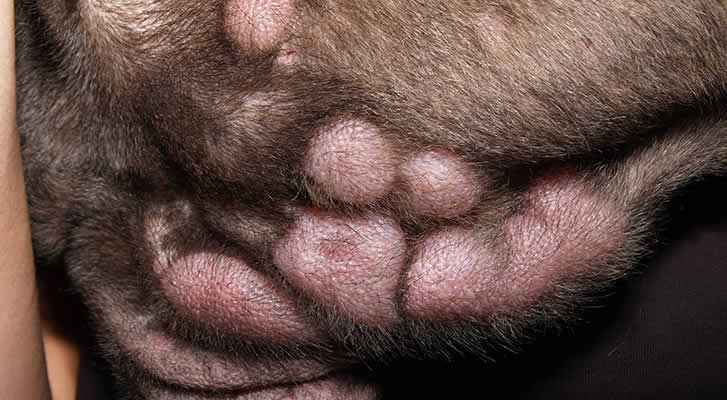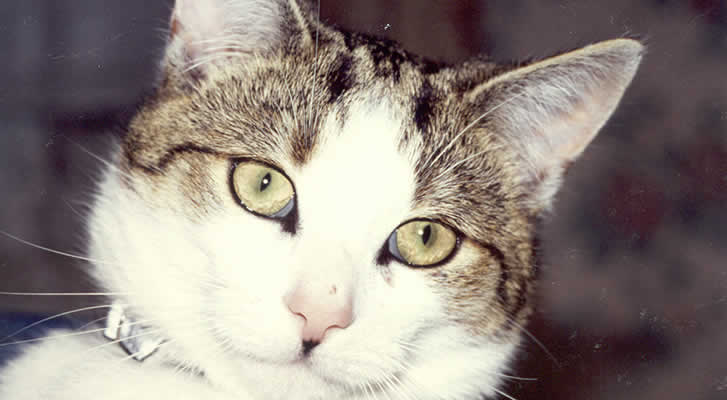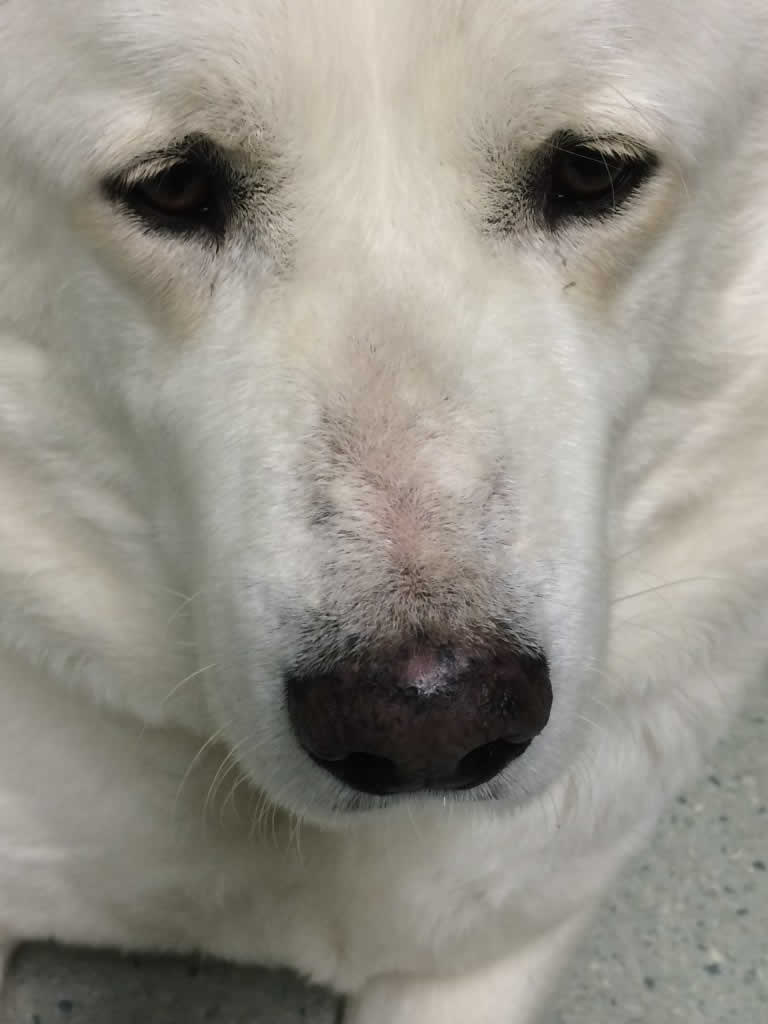Skin Complaints in Dogs and Cats
What do skin conditions look like and how do you diagnose one?
The skin is the largest and most visible organ in the body. It provides many different functions from both mechanical and physiological barriers between the animal and its environment, to acting as a sense organ perceiving heat, pain and pressure.
Unlike ourselves, the majority of our pet’s skin is usually covered with a hair-coat. This means that a change in their hair-coat is recognised as one of the more obvious signs when things start to go wrong with the skin. It can also prevent us from clearly seeing when things are wrong. It’s often necessary to close-clip the coat to get a ‘window’ in to the skin and see what is happening.
Many skin complaints in dogs can end up looking very similar. When things start to go wrong with the skin there are a few different indicators. These include:
- Changes to the hair-coat
- Pigmentation
- Lesions such as papules and pustules
- Crusts
- Erosions
- Scaling
The history of your pet’s skin and its appearance helps an experienced veterinary dermatologist to formulate a list of diagnoses; these can then be used to complete thorough tests and find out what the problem is. This often means that your pet may have to be seen on more than one occasion before the eventual diagnosis is made.
The big difference between consulting a veterinary dermatologist and a normal veterinary professional is the dermatologist’s training and knowledge. The steps between the first consultation and eventual diagnosis will be much shorter and most importantly, the treatment options will be based on the most up-to-date knowledge available. Also, a veterinary dermatologist is not hindered by time constraints in the same way a GP vet is. Most initial consultations are at least an hour long, allowing time to take a comprehensive history, carry out a full clinical examination including an in-depth examination of the animal’s skin and to carry out routine diagnostic tests.
As well as diagnosing treating allergic skin diseases, a Veterinary Dermatologist has expertise in treating bacterial and fungal skin conditions, nail and pad disorders, skin tumours, autoimmune skin diseases, hair loss and hormonal skin problems as well as ear conditions, which we have a special interest in at this clinic.
Calcinosis cutis
Feline Pemphigus Foliaceus
Footpad Hyperkeratosis
Pyotraumatic Dermatitis
Deep pyoderma caused by MRSP
Ringworm
Pemphigus Foliaceus in a Japanese Akita
Calcinosis Cutis after 5 months
Feline Pemphigus Foliaceus after treatment
Footpad Hyperkeratosis After Treatment
Pyotraumatic Dermatitis after 5 days Laser therapy
Urticaria – A sudden onset allergic reaction
Ringworm after treatment
Pemphigus Foliaceus after Treatment

